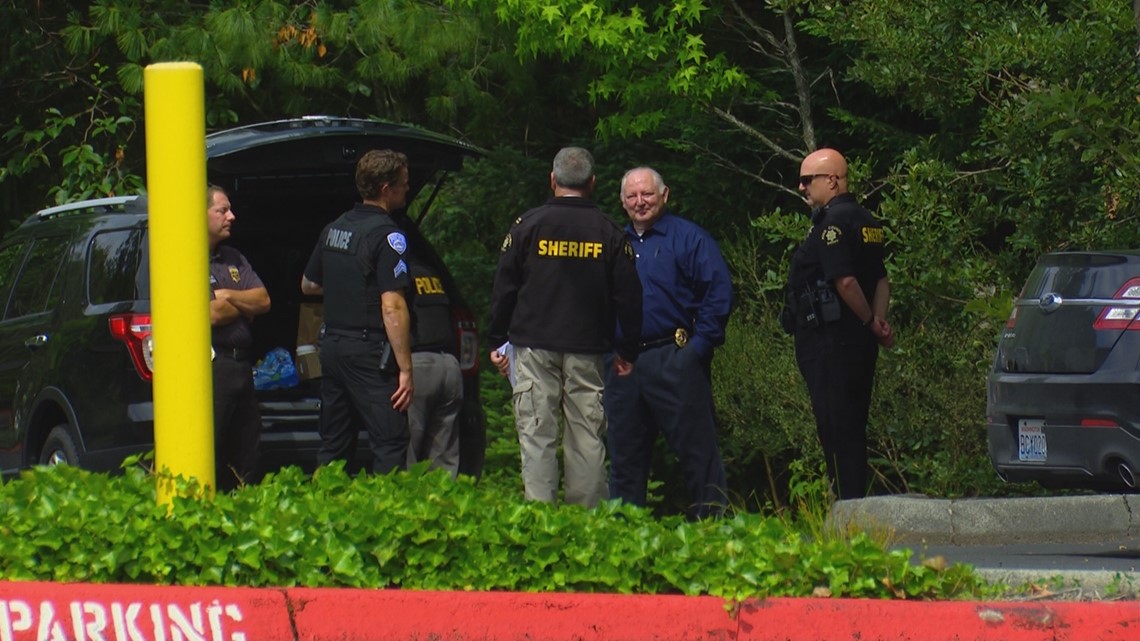


Įnd credits include the following acknowledgements: “The Producers Wish to Express Their Sincere Appreciation to the Following: Mark L. Allen Edmonds Shoe Corporation Pepsi Cola Auto Depot Naya Water And a Special Thank You to Jim Revette, 'The King of Eight-Mile.'". Pitts Melanie Pierce, The Raddison Admiral Semmes Hotel Econo-Lodge Spanish Fort Amsouth Bank The Saenger Theatre Rick Linio, Mobile Civic Center Cheryl McGovern, JMB Properties Anheuser Busch Coca-Cola Miller Beer Continental Airlines Southwest Ambulance Domino’s Pizza Seven Up Charles & Glendean Harrison Billy Ray McNeal/Bob Taylor Motion Picture Magic, Inc. Ray Quinn, The Alabama Film Office Eva Golsen, The Mobile Film Office Mayor Mike Dow & The City of Mobile Sheriff Tom Purvis and the entire Mobile County Sheriff’s Department The Mobile Police Department The Mobile Fire Department Mickey and Buddy Russell Dauphin Realty Peggy and Thomas Balkenhol 'Bushwackers' The Klotz Family Howard Breed, Republic Parking Paul Christopher, Ladd Stadium Janice Blankenship, BMC Engineers J.W. on, as noted in the DV film review.Įnd credits include the following acknowledgements: “The Producers Wish to Express Their Sincere Appreciation to the Following: Mark L. The picture premiered regionally in the Southern U.S. Locations included Los Angeles, CA, and Mobile, AL. The handful of fighters who have weapons take to these shelters, giving the uprising the advantage of defensive positions.According to the HR, principal photography was scheduled to begin on.

In the intervening time, many of the ghetto residents construct hidden shelters or bunkers in the basements and cellars of the buildings, often with tunnels leading to other buildings. Following some sporadic, spontaneous fighting at the ghetto railhead, the Umschlagplatz, in January, led by Moredecai Anielewicz, the scene is set for the more famous and prolonged battle that will begin on 19 April 1943. By the close of 1942, people living in the ghetto realize they are doomed, and the rudiments of resistance are planned by a handful of the young, including Edelman. The daily struggle against hunger and disease, especially among the dispossessed arrivals seen in their pitful rags, is aggravated by the German demands for "deportations to the east" that many begin to suspect are camouflaged mass murders. An overhead tracking shot shows the number of people assembled in the first months of the relocation. The film begins with the growing list of prohibitions and regulations leading to the virtual imprisonment of about half-a-million Polish Jews in an old slum district of Warsaw with inadequate space and plumbing. Using radically refashioned archival footage of the Warsaw ghetto, this interview with Jon Avnet the director of Uprising talks about Marek Edelman who is an evocative memoir of his role in the rebellion that held back the Nazis for almost a month in 1943.


 0 kommentar(er)
0 kommentar(er)
